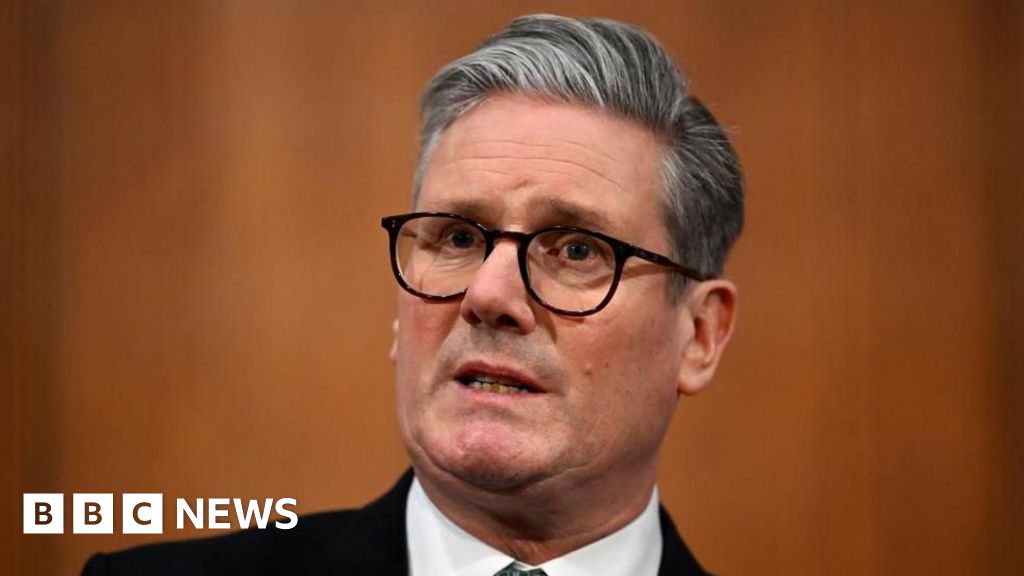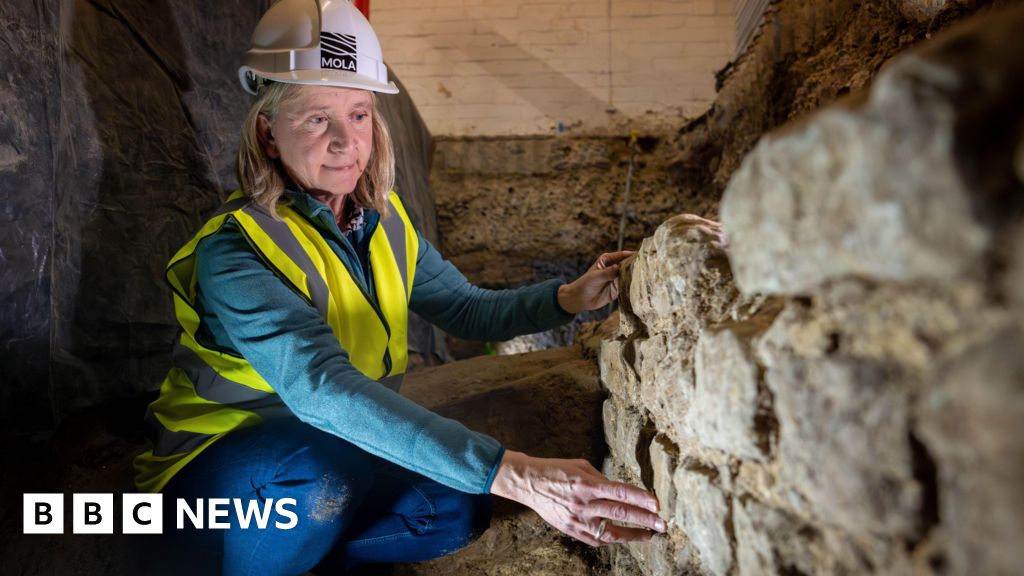
Senior Science Journalist
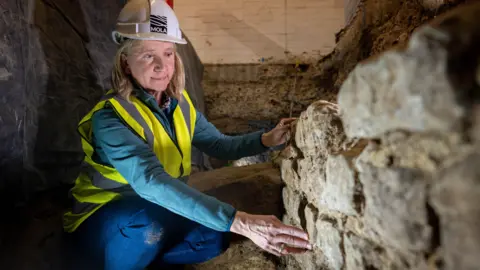
Tony Jolliffe/ BBC
A significant find beneath an office block in London has been heralded as one of the most notable discoveries of Roman history in the area.
Archaeologists have uncovered a substantial portion of the ancient city’s original basilica, a public structure dating back 2,000 years where vital political, commercial, and administrative decisions were made.
The dig has uncovered sections of stone walls that would have formed the foundational base of the basilica, originally estimated to be two-and-a-half stories high.
This site, which will eventually be accessible to the public, provides invaluable insights into the origins of the city.
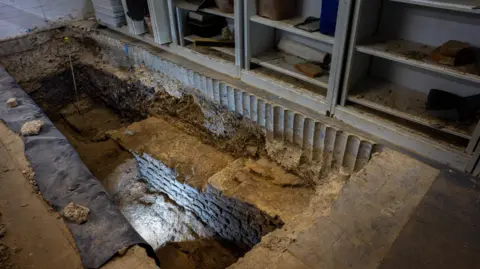
Tony Jolliffe/BBC
“This discovery is incredibly important—this is the core of Roman London,” expressed Sophie Jackson from the Museum of London Archaeology (Mola), who shared this exciting find with BBC News.
“This structure will provide significant insights into London’s origins, its development, and why it was designated as the capital of Britain. It’s truly astonishing.”
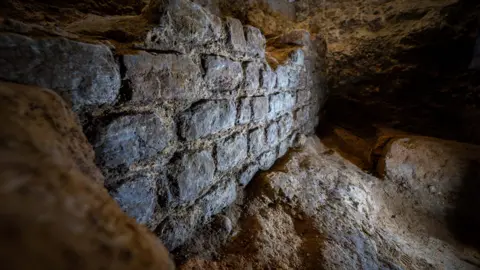
Tony Jolliffe/ BBC News
The discovery was made at 85 Gracechurch Street, an office building slated for demolition and redevelopment.
Prior archaeological explorations indicated the approximate position of the ancient basilica, prompting the team to dig multiple test pits beneath the concrete flooring.
After a third attempt, while digging amidst filing cabinets, they unearthed the impressive remnants.
“The visibility of this significant Roman masonry is extraordinary, and it’s remarkable that so much has survived,” said Sophie Jackson.
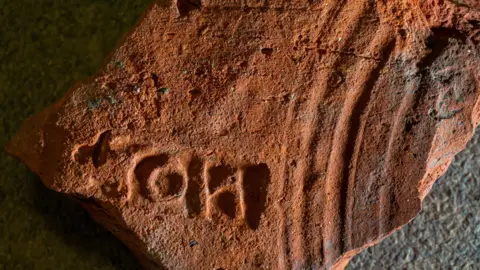
Tony Jolliffe/BBC
Crafted from a type of limestone sourced from Kent, the basilica would have presented an impressive structure, measuring approximately 40 meters in length, 20 meters in width, and reaching a height of about 12 meters.
Additional artifacts were also discovered, including a roof tile marked with the insignia of an ancient official.
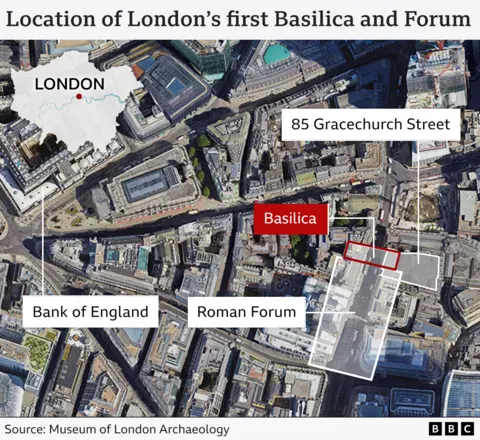
The basilica was part of a forum, a key social and commercial center featuring an expansive courtyard comparable to the size of a football pitch.
“The basilica acted as the town hall, while the expansive market square in front was surrounded by various shops and offices,” Ms. Jackson elaborated.
“This was the hub for conducting business, resolving legal matters, making laws, and overseeing decisions affecting both London and beyond.”
Constructed around 80 AD, shortly after the Romans conquered Britain and established Londinium, this initial basilica and forum were only in use for about two decades before being superseded by a more expansive second forum, suggesting rapid urban growth.
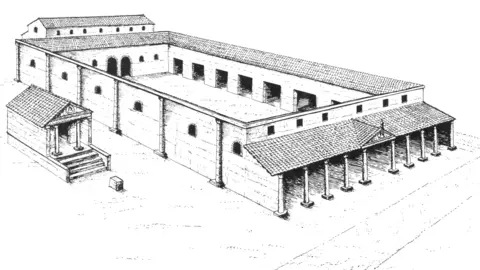
Peter Marsden
This discovery has necessitated a shift in plans for the property’s owners, Hertshten Properties.
The Roman remains will undergo full excavation and will be incorporated into the new office space, pending planning approval, and will also be accessible to the public.
For the architects, redesigning the building around an archaeological site has presented several challenges.
“The project has required substantial adjustments,” stated James Taylor from architectural firm Woods Bagot.
“Basic elements, like column placements, have had to be rearranged to protect these historically significant stones we’ve uncovered.”
Additionally, limiting disturbance to the site has resulted in fewer lifts being installed, leading to a reduction in the building’s overall height.
However, Mr. Taylor believes the effort will pay off.
“Witnessing individuals utilizing and appreciating the space, moving through the public hall to view the artifacts, will be absolutely remarkable.”
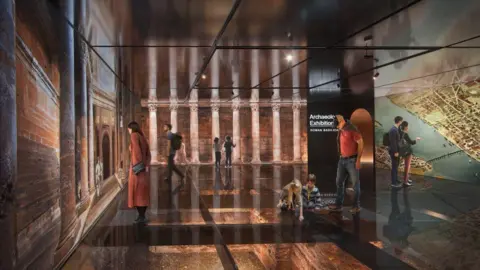
Woods Bagot
This recent Roman relic discovery adds to the evolving narrative of historical finds beneath London’s Square Mile. Efforts are underway to creatively present these sites to the public.
Parts of an ancient amphitheater are visible under a glass floor at the Guildhall Art Gallery, while Bloomberg’s offices feature a revitalized Temple of Mithras animating the site with immersive audiovisual experiences.
Chris Hayward from the City of London Corporation emphasizes the importance of connecting contemporary visitors to historical contexts.
“Experiencing Roman London existing just beneath your feet is profoundly moving,” he remarked.
“You can envision how Roman London was back then and then step outside to see the modern skyscrapers. It’s about progress, intertwined with preservation.”





